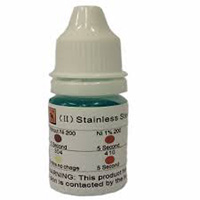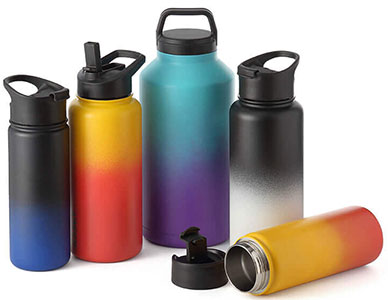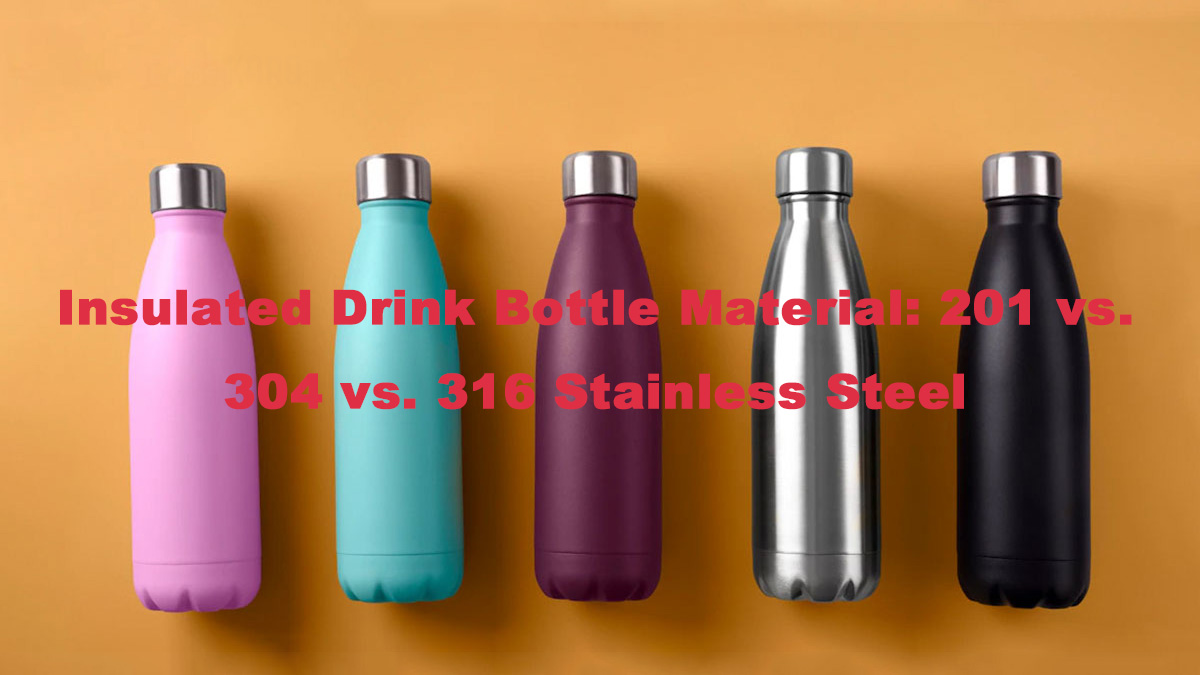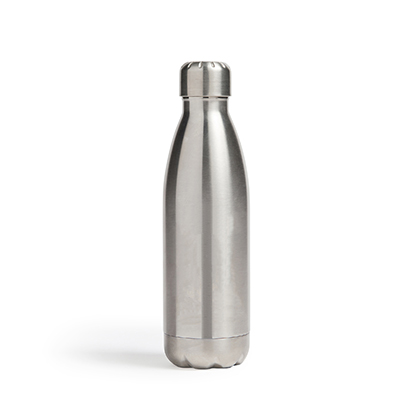1. What is stainless steel of 316 grade, 304 grade and 201 grade?

Stainless steel is an alloy composed primarily of iron, along with varying amounts of other elements such as chromium, nickel, manganese, and molybdenum. These additional elements enhance the properties of stainless steel, making it resistant to corrosion, heat, and wear.
316-grade stainless steel, also known as marine-grade stainless steel, is an austenitic stainless steel alloy containing chromium, nickel, and molybdenum. The addition of molybdenum provides increased resistance to corrosion, particularly against chlorides and other aggressive environments. It is highly resistant to pitting and crevice corrosion, making it suitable for use in marine environments, chemical processing, and medical applications. Additionally, 316 stainless steel offers excellent strength and high-temperature resistance.
304-grade stainless steel is another popular austenitic stainless steel alloy. It contains chromium and nickel. This grade is widely used in various applications due to its good corrosion resistance, ease of fabrication, and excellent formability. 304 stainless steel is commonly found in kitchen appliances, food processing equipment, automotive parts, and architectural components. It is resistant to most oxidizing acids and is generally suitable for indoor and outdoor applications in non-aggressive environments.
201-grade stainless steel is part of the austenitic family of stainless steels and contains around chromium-nickel, and a small amount of manganese. It is a lower-cost alternative to 304 and 316 stainless steel and is commonly used in applications where lower corrosion resistance is acceptable. 201 stainless steel is often found in kitchen utensils, sinks, automotive trim, and some architectural applications. While it offers good formability and low maintenance, it is generally less resistant to corrosion compared to 304 and 316 stainless steel.
2. What are the differences among 316, 201 and 304 stainless steel?
To better illustrate the differences between these three types of stainless steel, we have made two tables about their characteristics as follows:
| Stainless Steel 316 | Stainless Steel 201 | Stainless Steel 304 | |
| Chromium (Cr) | 16-18% | 16-18% | 18-20% |
| Nickel (Ni) | 10-14% | 3.5-5.5% | 8-10.5% |
| Molybdenum (Mo) | 2-3% | 0 | 0 |
| Carbon (C) | 0.08% max | 0.15% max | 0.08% max |
Property
| Stainless Steel 316 | Stainless Steel 201 | Stainless Steel 304 | |
| Corrosion Resistance | Offers excellent corrosion resistance, particularly in marine and chloride environments. It is highly resistant to pitting and crevice corrosion. | Provides moderate corrosion resistance. It is suitable for general indoor applications but may not be as resistant to corrosive elements as 316 or 304. | Exhibits good corrosion resistance in various environments. It is resistant to oxidation and can withstand exposure to acids, alkaline solutions, and atmospheric conditions. |
| Strength | Possesses high strength, making it suitable for structural applications and heavy-duty equipment. | Has moderate strength, suitable for general-purpose applications. | Offers moderate strength, making it suitable for a wide range of applications in different industries. |
| Weldability | Provides excellent weldability and can be easily welded using common methods like TIG, MIG, and resistance welding. | Offers good weldability and can be welded using various techniques. | Exhibits good weldability and can be welded using standard methods. |
| Common Application | Widely used in marine equipment, chemical processing, medical implants, food processing equipment, and more. | Commonly used for decorative items, utensils, automotive parts, plumbing fixtures, and building materials. | Utilized in food processing equipment, architectural components, kitchen appliances, industrial equipment, and various other applications. |
| Formability | All three grades have good formability and can be easily shaped, bent, or fabricated into different forms without significant issues. | ||
Corrosion resistance, strength, weldablity, common application and formability
3. Which one is best material for insualted drink bottle: 316, 201 or 304 stainless steel?
When it comes to choosing the best material for an insulated drink bottle, all three options—316, 201, and 304 stainless steel—have their advantages and considerations. However, among these options, 316 stainless steel is generally considered the best choice for insulated drink bottles. This grade of stainless steel is also known as marine-grade stainless steel. It is highly resistant to corrosion, particularly in environments with chlorides or saltwater. It offers excellent durability and can withstand harsh conditions, making it a popular choice for outdoor and marine applications. It is also less prone to pitting and crevice corrosion than other stainless steel grades. As a result, 316 stainless steel is a preferred material for insulated drink bottles, ensuring long-lasting performance and resistance to corrosion.
However, 304 stainless steel can also be a suitable option for everyday use, while 201 stainless steel may be less desirable due to its lower corrosion resistance.
4. How to tell stainless steel grade?
Determining the grade of stainless steel can be challenging without specialized equipment. Most of the time we can recognize the types with the help of markings or labels. Stainless steel products often have markings or labels that indicate the grade. Look for engraved or stamped numbers, letters, or symbols on the surface of the material. These markings can provide valuable information about the grade. Besides, there are also some visual and non-destructive methods we can use to make an educated guess.
- Magnetic properties: Magnetic properties can help differentiate between stainless steel grades. 316 stainless steel is typically non-magnetic, while 201 and 304 stainless steel are usually magnetic. You can use a magnet to test the material’s magnetic response. If it attracts interest, it’s likely not 316 stainless steel.
- Appearance and surface finish: Stainless steel grades can have distinct appearances. While visual cues are not foolproof, they can provide some guidance.
| Stainless Steel 316 | Stainless Steel 201 | Stainless Steel 304 | |
| Surface Appearance | Smooth and reflective | Less reflective, duller | Bright and reflective |
| Tint | Dark bluish | Yellowish/golden | Slightly yellowish/greyish |
- Mn testing chemical reagent: This is also an identification method. To test for manganese content in stainless steel, begin by collecting a clean sample of the material. Ensure that you are wearing appropriate safety gear, including gloves and goggles, to protect yourself. Next, apply a few drops of sodium bisulfite solution to the stainless steel sample. Observe the reaction closely. If there is no significant colour change, it suggests a low manganese content, indicating that the stainless steel is likely of grade 304. However, if you notice a pinkish or reddish colouration, it indicates the presence of manganese, suggesting a grade other than 304, such as 201 or 316. But please remember that this method provides a rough indication for precise identification.

5. Conclusion
In summary, stainless steel grades 316, 201, and 304 have different properties and applications. 316 stainless steel offers excellent corrosion resistance and is commonly used in marine environments. 304 stainless steel is versatile and widely used due to its corrosion resistance and formability. 201 stainless steel is a lower-cost alternative with moderate corrosion resistance. To determine the grade, look for markings or labels, consider visual cues like surface appearance and tint, and use magnetic properties as an indicator. 316 stainless steel is generally the best choice for insulated drink bottles due to its corrosion resistance and durability.
If you’re looking for a high quality water bottle manufacturer, BulkFlask is an experienced company worth considering. BulkFlask specializes in manufacturing top-notch wholesale drinkware products known for their durability and performance. We prioritize using 316 stainless steel, which offers superior corrosion resistance, making our drinkware suitable for various environments, including marine and outdoor settings. If you want more information, don’t hesitate to get in touch with us!


